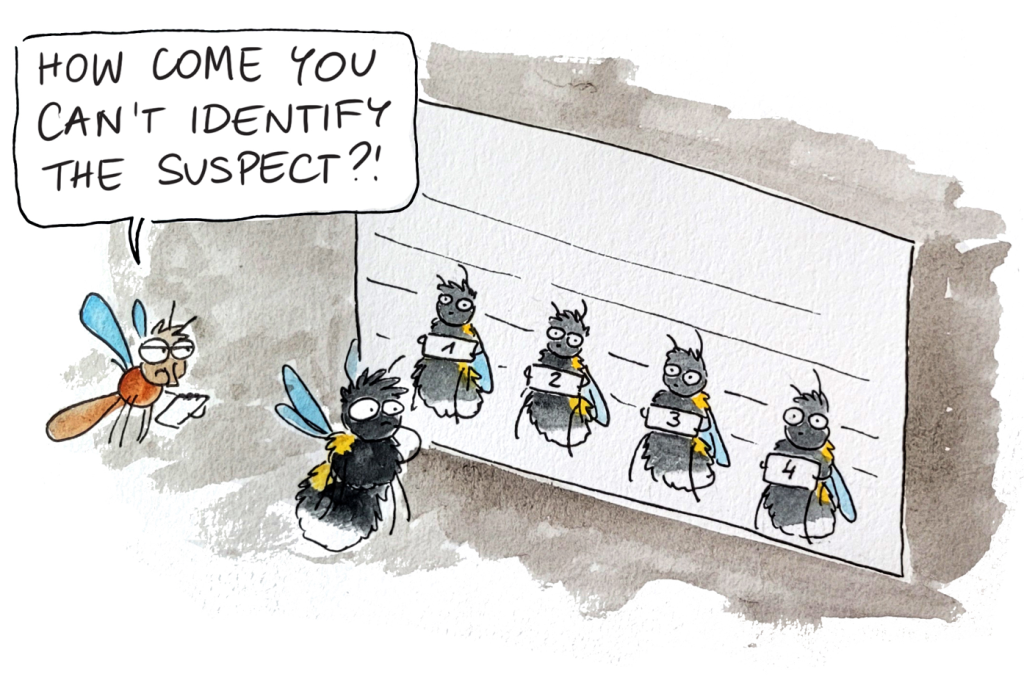Bee species identification is considered quite a hard job. There are some easily distinguishable species, but others demand looking closely at the specimen under a magnification. Some bumblebees take it to an even higher level. Bombus terrestris, B. lucorum, B. cryptarum and B. magnus are four closely related species living in my area, whose males and queens are often very difficult to separate, and workers, especially old and worn ones, are considered inseparable in many cases, and I mean inseparable at all by the means of looking at a specimen – even if you take it to the laboratory and look under the microscope. How on earth do these bumblebees recognize each other?! Well, they have more senses than just vision at their disposal. For example, males’ pheromones differ between these four species. When scientists are very determined to be sure which species they caught, they can do chemical analyses of these substances, or just do genetic analysis.
Fun fact: if you are eg from UK or Iberian Peninsula, you might have far less trouble recognizing your Bombus terrestris than me in Central Europe. In UK it tends to have more or less buffish tail (instead of pure white), and in Iberian Peninsula the corbiculae of females are reddish.

Leave a comment